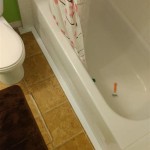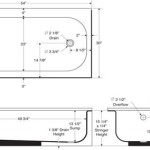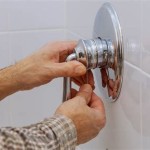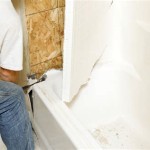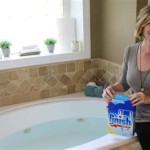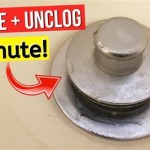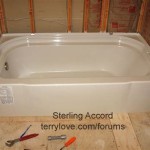How to Turn a Bathtub Into a Shower
Many homeowners contemplate converting their bathtubs into showers for a variety of reasons. Limited mobility, a preference for showering over bathing, or a desire to modernize a bathroom are common motivations. This transformation can significantly improve the functionality and aesthetic appeal of a bathroom. However, a successful bathtub-to-shower conversion requires careful planning, the appropriate tools, and a thorough understanding of plumbing and construction principles.
Before commencing any renovation project, it's crucial to assess the existing bathroom infrastructure. Plumbing lines, drainage systems, and the overall structural integrity of the bathroom floor and walls all play a critical role in determining the feasibility and complexity of the conversion. Neglecting these initial considerations can lead to unforeseen problems and costly repairs down the line.
The scope of the project can range from a simple replacement of the bathtub with a shower base to a more extensive remodel involving changes to the plumbing layout, wall tiling, and overall bathroom design. The choice depends on the homeowner's budget, skill level, and desired outcome. A professional contractor can provide valuable insights and guidance in making these decisions.
Planning and Preparation
A successful bathtub-to-shower conversion hinges on meticulous planning and preparation. This phase involves precise measurements, material selection, and a clear understanding of the building codes and regulations applicable to the homeowner's location. Failure to adhere to these regulations can result in fines and delays.
The first step is to carefully measure the existing bathtub dimensions and the surrounding area. These measurements will determine the size and shape of the new shower base and enclosure. Consider the shower's location relative to existing plumbing lines and the overall bathroom layout. Accessibility requirements, such as incorporating grab bars or a low-threshold shower base, should also be considered at this stage.
Material selection is another critical aspect of the planning phase. Shower bases are available in a variety of materials, including acrylic, fiberglass, cast iron, and composite materials. Each material has its own advantages and disadvantages in terms of durability, maintenance requirements, and cost. Tile is a popular choice for shower walls due to its water resistance and aesthetic appeal. However, proper waterproofing is essential to prevent water damage. Ensure that the chosen materials comply with relevant safety standards and building codes.
Before starting any demolition work, it is important to shut off the water supply to the bathroom. This will prevent accidental flooding and potential damage to plumbing fixtures. Disconnect the drain from the bathtub and carefully remove any existing caulking or sealant. Protect the surrounding floor and walls with drop cloths or plastic sheeting to prevent damage during the demolition process.
Obtain all necessary permits before commencing any demolition or construction work. Building permits are typically required for plumbing and electrical modifications, and failure to obtain them can result in fines and delays. Contact the local building department to determine the specific permit requirements for the project.
Demolishing the Existing Bathtub
The demolition phase involves the removal of the existing bathtub and any surrounding tile or wall coverings that will be replaced. This process can be physically demanding and requires caution to avoid injury and damage to the surrounding bathroom structure.
Start by carefully removing the bathtub drain. This may require disconnecting the drainpipe using a pipe wrench or other appropriate tools. Be prepared for some residual water to drain out when the drain is disconnected. Place a bucket underneath the drain to catch any water.
Depending on the type of bathtub and its installation method, it may be necessary to remove screws, nails, or adhesive holding the bathtub in place. Carefully inspect the bathtub for any hidden fasteners before attempting to remove it. Use a pry bar or other suitable tool to gently loosen the bathtub from the surrounding walls and floor.
Bathtubs are often heavy and bulky, so it is important to have assistance when removing them. Lift the bathtub carefully and avoid dropping it, as this could damage the bathtub itself or the surrounding floor. Dispose of the old bathtub properly according to local regulations.
Once the bathtub has been removed, inspect the exposed subfloor for any signs of water damage or rot. Repair any damaged areas before proceeding with the installation of the shower base. Ensure that the subfloor is level and solid to provide a stable foundation for the shower base.
Remove any existing tile or wall coverings that will be replaced. Use a pry bar or chisel to carefully remove the tile, taking care not to damage the underlying wall studs or drywall. Inspect the wall studs for any signs of water damage or rot and repair them as necessary.
Installing the New Shower
The installation of the new shower involves connecting the plumbing, installing the shower base, waterproofing the walls, and installing the shower enclosure. This phase requires meticulous attention to detail and a thorough understanding of plumbing and construction principles.
Before installing the shower base, ensure that the drainpipe is properly positioned and connected to the existing plumbing system. Install a new drain trap if necessary. The drain trap prevents sewer gases from entering the bathroom. Check the drain for leaks before proceeding with the installation.
Follow the manufacturer's instructions for installing the shower base. Typically, this involves applying a layer of mortar or thin-set adhesive to the subfloor and setting the shower base on top. Ensure that the shower base is level and properly aligned. Use shims if necessary to achieve a level surface.
Once the shower base is in place, it is essential to waterproof the surrounding walls. Apply a waterproof membrane to the walls, extending several inches beyond the shower base. Use a paint roller or brush to apply the membrane evenly, ensuring that all seams and corners are properly sealed. Allow the membrane to dry completely before proceeding with the installation of the tile.
Install the tile according to the desired pattern and design. Use thin-set mortar to adhere the tile to the walls. Use tile spacers to maintain consistent spacing between the tiles. Allow the mortar to dry completely before grouting the tile.
Apply grout to the tile joints, ensuring that all gaps are filled. Use a grout float to press the grout into the joints. Wipe away any excess grout with a damp sponge. Allow the grout to dry completely before sealing it.
Install the shower enclosure according to the manufacturer's instructions. This typically involves attaching the shower door or panels to the walls using screws or adhesive. Ensure that the enclosure is properly aligned and sealed to prevent water leaks.
Connect the shower fixtures, including the showerhead, faucet, and any other accessories. Ensure that all connections are tight and leak-free. Test the shower to ensure that it is functioning properly.
Apply caulk to all seams and joints around the shower base and enclosure. This will prevent water from seeping behind the walls and causing damage. Use a high-quality mildew-resistant caulk for best results.
Inspect the finished shower for any defects or issues. Make any necessary adjustments or repairs. Clean the shower thoroughly before using it.

Bathtub To Shower Conversion Safe Bathroom For Seniors

How To Shower When You Only Have A Bathtub

7 Tricks To Turn A Tub Into Walk In Shower

How To Convert A Tub Into Walk In Shower Budget Dumpster

How To Shower When You Only Have A Bathtub

Gorgeous Bathroom Ideas Shower En 2024 De Decoración Baño Unas Diseño Baños

How To Convert A Tub Into Walk In Shower Budget Dumpster

The Pros And Cons Of Converting A Standard Tub Into Walk In Shower Naperville

Master Bathroom Renovation Converting A Bathtub Into Walk In Shower Our Handcrafted Life

Convert Shower To Bath Tub Conversion Planet
Related Posts

